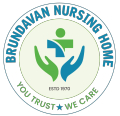Navigating pregnancy can be a beautiful journey, but sometimes it brings challenges like preeclampsia. This condition may develop quickly and poses risks for mothers and their babies. Awareness and care are crucial to make this journey special. Managing preeclampsia includes recognizing its signs and seeking solutions.
This blog serves as a helpful guide for pregnant women dealing with preeclampsia. It shares tips, solutions, and support to ensure the safety of mother and baby. Having timely knowledge encourages mothers to stay alert and ready when managing preeclampsia.
Understanding Preeclampsia and Its Impact
Preeclampsia is a health issue that can arise during pregnancy. It features a sudden increase in blood pressure, starting after 20 weeks. This condition sends up red flags, as it jeopardizes both mother and child. Swift recognition is essential to safeguard health.
The roots of preeclampsia remain partially unknown, often tied to placenta troubles. Genetics play a role, alongside factors like existing hypertension. With this knowledge, preventive steps become vital to avoid complications.
Preeclampsia affects 5-8% of pregnancies, presenting as increased blood pressure during pregnancy. It can lead to early delivery or slow fetal growth. Its importance makes regular checks and timely actions necessary to manage risks.
Recognizing Signs and Symptoms of Preeclampsia
Symptoms of preeclampsia start with high blood pressure and protein in urine. Sudden swelling on hands, face, or feet occurs often. It’s vital to recognize these signs to prevent serious issues.
Other symptoms of toxemia include severe headaches and vision changes like blurred lights. Abdominal pain and trouble breathing might also appear. Early detection is key for better health outcomes.
Spotting the early signs of preeclampsia can make a big difference. Prompt action can help ensure safety for both mother and child. Seeking medical advice early can prevent more severe problems.
Diagnosis: How is Preeclampsia Detected?
Preeclampsia is diagnosed by checking blood pressure and protein levels.
Routine prenatal visits are key to catching issues early in pregnancy.
Frequent medical check-ups provide peace of mind to expecting mothers.
Identifying Risk Factors and High-Risk Groups
Several risk factors can increase the chance of preeclampsia during pregnancy. If you’ve had preeclampsia before, there’s a higher possibility you’ll have it again. Carrying twins can also raise your risk, as can having health issues like high blood pressure.
Family history hugely impacts the likelihood of experiencing preeclampsia. Genetic tendencies mean that if relatives faced it, you might too. Knowing your family’s health background helps you understand what personal risks you might face.
Holistic Approaches to Prevention
Practical lifestyle choices can make a big difference. Eating a balanced diet and engaging in regular physical activity contribute to health. Managing stress is also crucial for overall well-being during pregnancy.
Supplements like calcium and low-dose aspirin might reduce preeclampsia risk for some women. It’s wise to discuss with a healthcare provider before starting any supplement. When approved, supplements can offer an extra preventive layer.
Alternative strategies involve acupuncture, meditation, and better sleep hygiene practices. These holistic approaches align mind and body, promoting a nurturing environment for both mother and baby.
Effective Management and Treatment Options
Managing preeclampsia means using strategies that fit each patient’s needs. Mild cases often require lifestyle tweaks and more frequent check-ups. For severe cases, medical care is crucial to ensure both mother and baby are safe.
Medications like blood pressure drugs or magnesium sulfate may be necessary. These medicines help manage preeclampsia complications, improving overall health for the mother. The healthcare team plays a key role in starting these treatments.
Open discussions between patient and doctor help set expectations and ease worries. A supportive medical team raises confidence, stressing teamwork when handling preeclampsia and eclampsia definitions effectively.
The Ultimate Goal: Safe Delivery and Recovery
Deciding the right time to deliver is very important for mothers with preeclampsia. Doctors usually suggest delivering as soon as the pregnancy hits 37 weeks or sooner if health concerns arise. The main aim is to keep both mother and baby safe and sound.
Several factors are considered regarding delivery, like the mother’s high blood pressure, ensuring the baby’s growth is on track as well. Delivering timely stops complications from preeclampsia, which can harm organs in mothers and slow development in babies
.
Deciding between natural delivery and a C-section depends on various factors. For instance, how serious the preeclampsia is, and how the baby is placed in the womb impacts this choice. Natural birth might be viable if conditions permit, but severe preeclampsia cases may benefit from a C-section to minimize issues further. This decision involves weighing immediate safety and long-term well-being for both mother and child.
After childbirth, it’s critical for mothers who had preeclampsia to get regular check-ups. Post-recovery care focuses on keeping an eye on blood pressure for any lasting effects of preeclampsia. Following prescribed medication plans and attending follow-ups ensures any problems are addressed quickly, promoting long-term health.
Lifestyle Adjustments and Emotional Support
Managing stress is crucial when dealing with preeclampsia during pregnancy. Including practices like yoga helps reduce everyday stress effectively. A well-balanced diet plays a role in supporting your health daily. Regular exercise, approved by your doctor, can help keep blood pressure healthy. This approach is important for avoiding elevated blood pressure while pregnant.
Emotional support greatly aids in handling preeclampsia challenges. Surrounding yourself with family and friends offers much-needed comfort readily. Connecting with support groups can provide reassurance and practical guidance frequently. Feeling understood positively impacts your emotional health during this time.
Hearing stories from others who navigated preeclampsia post birth is inspirational. Shared experiences provide hope and practical solutions as needed. Learning about similar challenges faced by others brings comfort often. Proactive medical care alongside lifestyle changes made a difference significantly.
Conclusion and Encouragement
Recognizing the early signs of preeclampsia can save lives.
Being informed helps mothers make better decisions about preeclampsia.
Choose Brundavan Nursing Home for care tailored to your needs.

